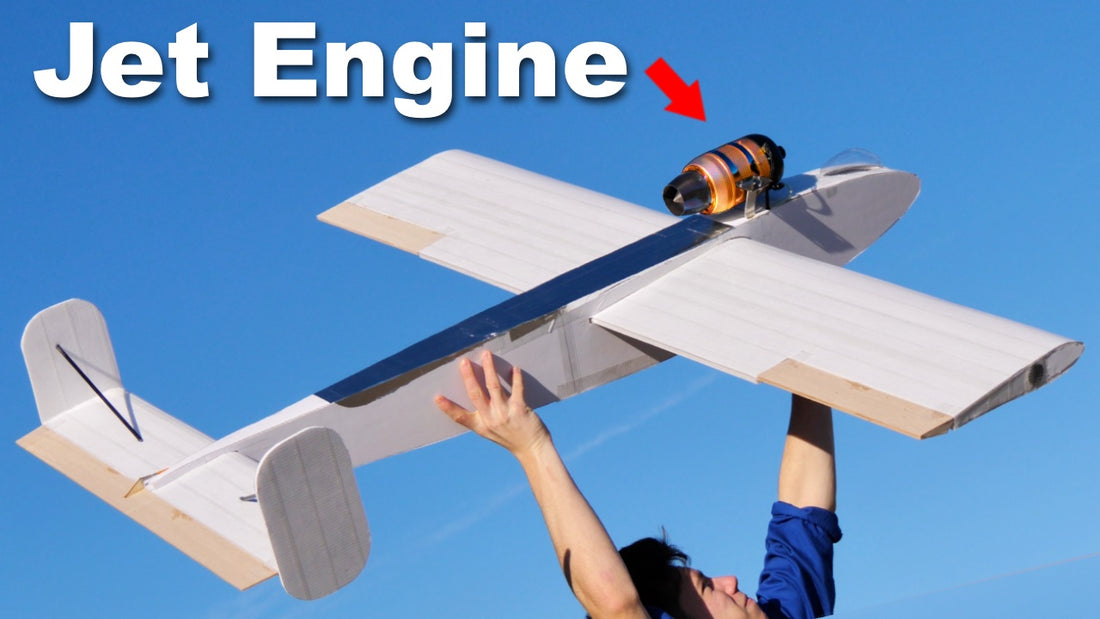You're not supposed to construct a turbine-powered jet aircraft from foam board and packaging tape, but I did anyway... and it was a disaster.
(but not for the reasons you might think).
Watch the full video here:
This project would see me finally put my original Swiwin 120B, the first turbine I ever owned, to work as its makers intended, onboard a model aircraft.

We wanted to build it from foam board and packaging tape to see if these materials would hold up to the incredible speeds the engine would be capable of pushing this plane.

For the most part, as expected, this worked great! I used some glass-fibre reinforced packaging tape, which sort of means the plane was in some way fibre glassed over the outside of the foam board, in a very DIY way.

The aircraft was modelled in CAD and, with the help of some kind students from Bath University, part of an organization called the Mach Initiative, simulated in a virtual wind tunnel to get some data points about top speed, stall, takeoff speed and angle of attack.
Hopefully the Mach Initiative team will be helping with more of this sort of thing with future aircraft projects. Check out their website here (it's worth a look!).

To launch the plane, a launch ramp was necessary. This was made from aluminium truss section.

The plane was now finished with it's electronics, fuel tank, pump and ECU. Looking good.




Setting up everything in -2 Celsius was a bit painful, but finally the project had come together, and it was time to launch.

Checking the controls.

Ready to go.

A clean takeoff, albiet slightly slow resulting in an initial drop. Takeoff should have been at 17m/s. I'm not sure what velocity the aircraft was actually going at the end of the ramp, although it would be fairly easy to figure out looking at the time/distance over the final 2m length of launch ramp. In any case it almost stalled!

After a wobble and a near miss with the wall, we were away.

Now for trouble - 10 seconds in, the engine quit - and then the radio failed! No connection to the aircraft; the plane was now doomed.

An unfortunate end, but lots learned for the version 2.

As mentioned in the video, the cause of the crash is most likely to be due to the radio. I think the engine dying was due to air bubbles, although there is a chance it could be related to maybe a prior undetected, very brief brownout from the radio just as the plane entered the turn.

One thing is for sure, I'm using different radio gear on the next one!
Thanks for reading. Make sure to check out our other articles and subscribe to the Project Air newsletter.


3 comments
Hi Mr. James,
I am Arnav from India and really love your videos and models. I would love for you to reach out to me. I have made gliders including foam and plastic and various paper and cardboard planes with really good distances. I would love to learn how to make an advanced control line plane/car from you. Really liked the record breaking plane and the new record breaking thrust powered RC car. I would love for you to reach out to me.
Regards
A subscriber/ teen/ aspiring learner
This sucked
Para este proyecto , compartirás los planos en turbina ETF ?